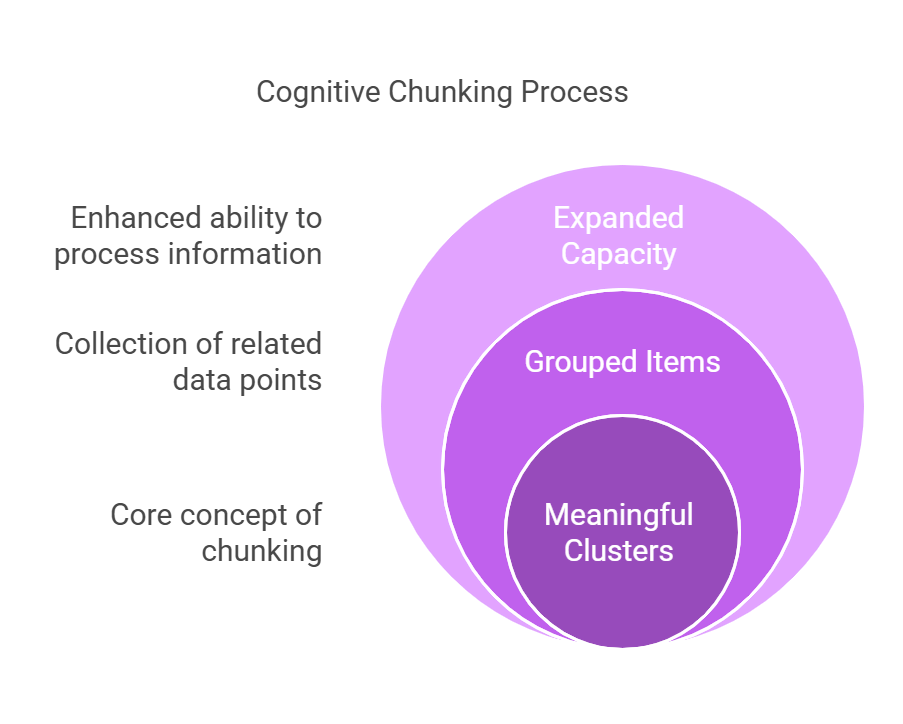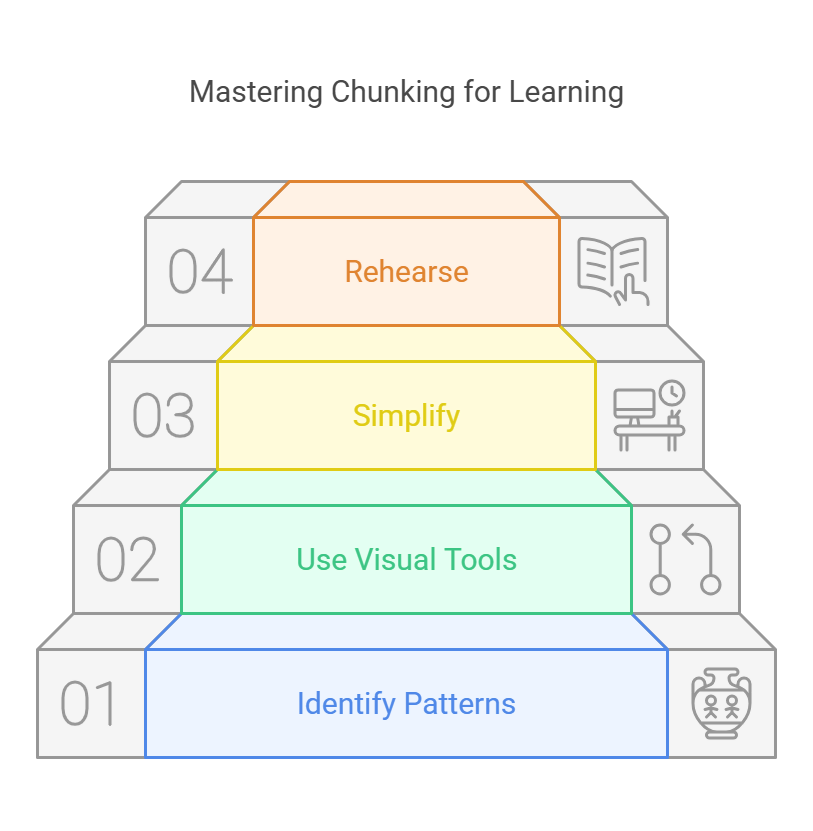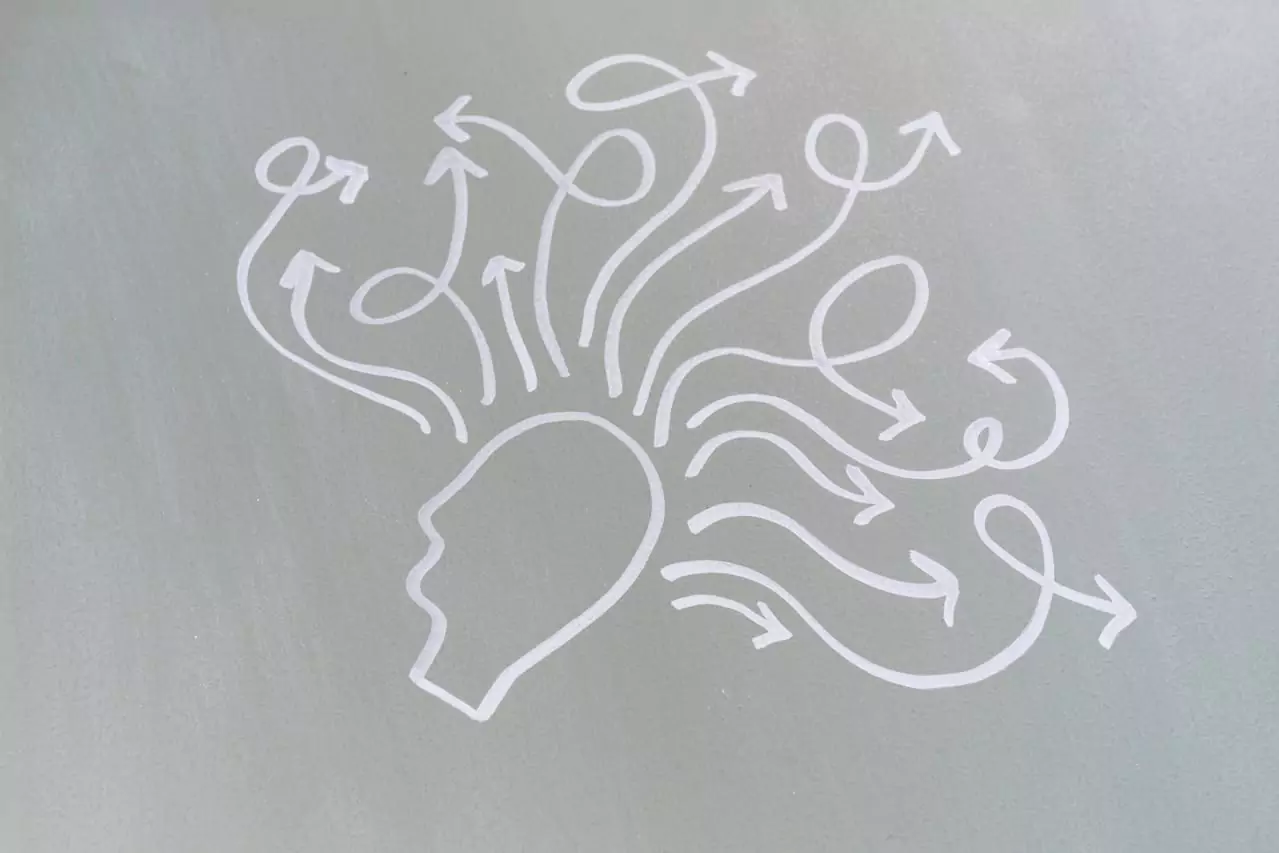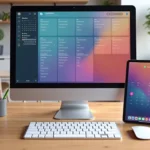
Chunking is just a fancy way of saying “break it down.” It’s a super handy trick where you group information into smaller, bite-sized pieces, making it easier to understand, remember, and use later. The idea comes from George Miller, a psychologist who came up with it back in 1956. Since then, chunking has become a go-to strategy for learning and memory. Whether you’re studying for a test or tackling your to-do list, chunking is like your go-to trick for making things easier and less overwhelming.
The Science Behind Chunking

Our brains can only juggle so much info at once. Psychologist George Miller found that short-term memory can hold about 7 things at a time, give or take a couple. Chunking is like breaking big chunks of info into smaller, bite-sized pieces, so it’s easier for your brain to handle without feeling swamped.
Example:
Take a 10-digit phone number like “9876543210.” Trying to remember it as one long string is tough, right? But split it into “987-654-3210,” and suddenly it’s way easier to keep in your head.
Chunking gives your brain a breather, letting you focus on the stuff that really matters. It’s a simple, no-fuss trick that makes learning and problem-solving feel way less stressful!
How Chunking Makes Learning Easier

Chunking doesn’t just make information easier to manage—it also helps you understand and remember it better. When you group related ideas, your brain stores them more efficiently and retrieves them faster later.
A 2018 study found that students who used chunking remembered 23% more than those who didn’t. That’s a big boost for such a simple trick!
Where Can You Use Chunking?
1. Learning and Studying
Teachers and students swear by chunking because it makes tough topics feel less intimidating. A study in Educational Psychology found that students using thematic chunking performed 30% better on recall tests.

- Example: If you’re learning new vocabulary, group words by themes, like “animals” or “sports.” It’s easier to remember related words together than random ones.
2. At Work
Chunking helps break down big projects into smaller steps so they don’t feel overwhelming.
- Example: Instead of thinking, “I need to finish this whole report,” break it into sections like research, writing, and editing.
3. Everyday Life
Even simple things, like grocery shopping, are easier with chunking.
- Example: Group your list into categories like “produce,” “dairy,” and “snacks.” Shopping will feel way more organized.
How to Get Started with Chunking
Chunking is super easy to pick up. Here’s how you can start:

- Look for Patterns: Try to spot connections in what you’re learning.
- Example: If you’re studying history, group events by time periods or themes like politics or culture. It makes everything easier to remember.
- Use Visuals: Draw mind maps, charts, or doodles to organize your chunks. Sometimes seeing it laid out helps the brain click.
- Keep It Simple: Don’t make it complicated. Just focus on breaking things down into small, clear groups. Less is more!
- Practice Makes Perfect: Go over your chunks regularly to lock them into your memory. It’s like giving your brain a little workout.
Chunking’s all about making life easier, so have fun with it!
Why Chunking Matters
Chunking isn’t just for school or work—it’s a life hack for making things easier. It helps you break down overwhelming tasks, learn faster, and remember more.

Next time you’re feeling stuck, try chunking. Whether you’re cramming for a test, organizing a project, or just trying to remember your grocery list, chunking is a simple trick that works wonders. It’s like giving your brain a little cheat sheet!
Expert Insights on Chunking
- George Miller: “Chunking is not just a memory trick but a fundamental way of organizing thought.”
- Dr. Barbara Oakley, author of A Mind for Numbers: “Chunking builds mental connections, creating superhighways in the brain for quicker recall.”
How Does Chunking Help You Learn?
Chunking is like giving your brain a cheat code for remembering stuff. Instead of trying to juggle a million details, you group them into smaller, bite-sized chunks, making it easier to process and recall. Let’s break it down into simple terms.

1. It Stops Your Brain From Feeling Overloaded
Your brain can only handle so much at once—about 7 things at a time, according to a famous study. Chunking works by breaking big pieces of information into smaller, manageable bits.
Example:
Think of a phone number. Trying to remember “9876543210” is tricky, but when you chunk it into “987-654-3210,” it’s way easier. It’s like organizing clutter into neat little piles.
2. It Makes Things Stick in Your Memory
When you group information in a meaningful way, your brain is more likely to move it from short-term memory to long-term memory. The more connections you make, the easier it is to remember.
Example:
Learning new words? Group them by theme—like “fruits” or “sports.” Your brain links them together, so recalling one word can trigger the others.
3. It Helps You Spot Patterns
Our brains love finding patterns—it’s how we make sense of the world. Chunking takes advantage of this by showing you the bigger picture instead of drowning you in details.
Example:
Learning multiplication? It’s easier to start with patterns like the 2s, 5s, and 10s. Spotting those patterns makes the rest feel less intimidating.
4. It Makes Problem-Solving Easier
When information is organized into chunks, solving problems becomes less overwhelming. You can tackle one piece at a time instead of trying to figure everything out at once.
Example:
Programmers do this all the time. They break their code into small sections, so if something goes wrong, they only have to check one part instead of the whole thing.
5. It Gets You Involved
Chunking isn’t passive—it forces you to think about how to group information. By doing this, you’re actually engaging with what you’re learning, which helps you understand and remember it better.
Example:
When studying history, chunking events into themes like politics, culture, or economics makes it easier to see the connections between them.
6. It Saves Brainpower for the Important Stuff
Chunking keeps your brain from getting bogged down by unnecessary details. It frees up mental space so you can focus on applying what you’ve learned instead of just trying to keep it all in your head.
Example:
Nurses group their tasks into categories like “assessment, diagnosis, treatment.” This helps them stay focused and efficient, especially in high-pressure situations.
Final Thoughts: Why Chunking Matters
Chunking is like a Swiss Army knife for your brain: versatile, practical, and endlessly useful. Whether you’re learning a new skill, studying for an exam, or just trying to remember the lyrics to your favorite song, chunking can make the impossible feel doable.
So the next time you’re staring at a mountain of information, don’t panic. Break it down, group it up, and conquer it—chunk by chunk. After all, even the biggest challenges are just a series of smaller steps, neatly organized and tackled one at a time. (And hey, if all else fails, there’s always Google.)
Here are the study links referenced in the article:







